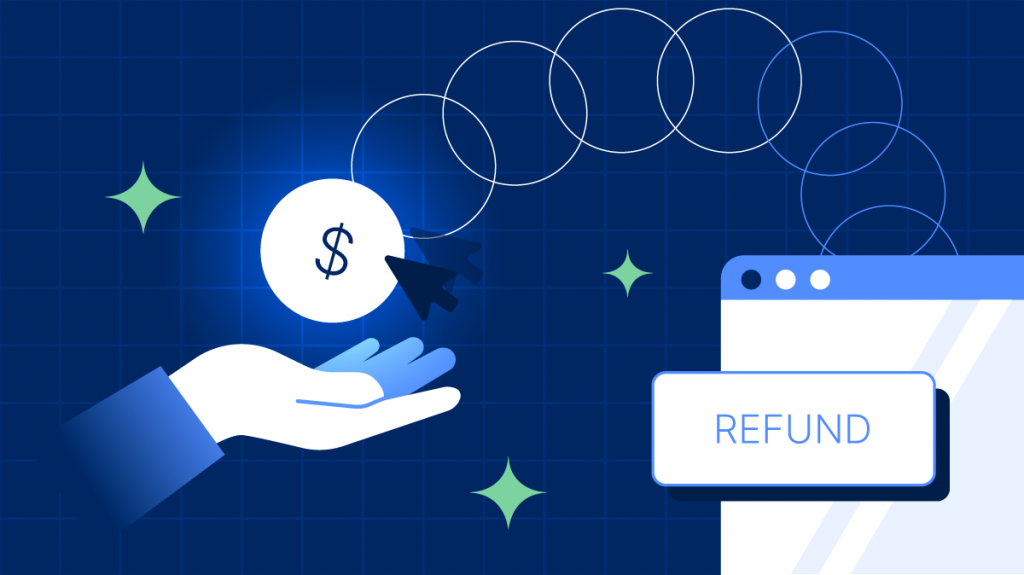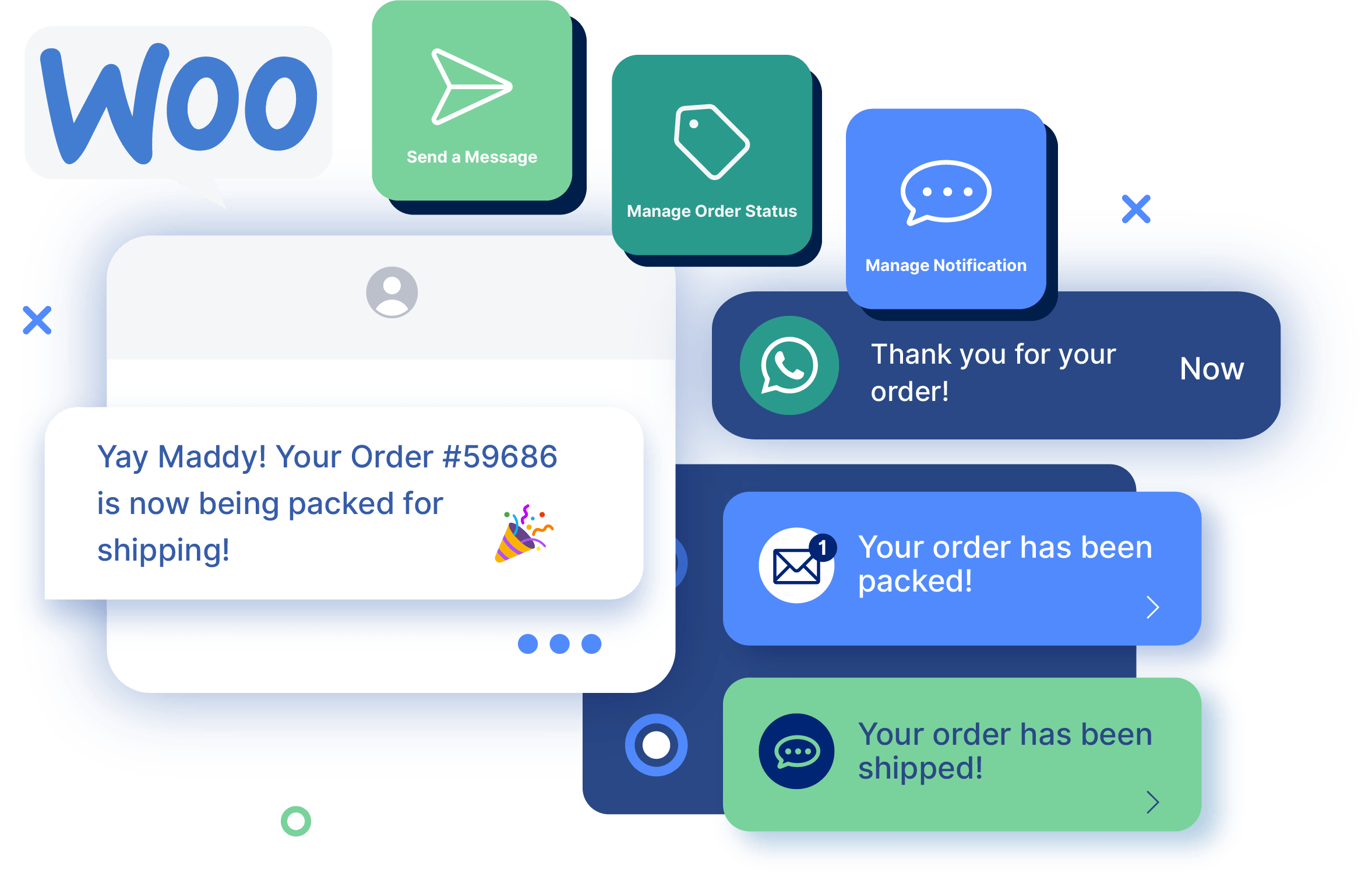Order notifications
Processing Refunds in WooCommerce: Your Complete Guide
Are you frustrated with the complexity of handling refunds in your WooCommerce store? Are you struggling to meet customer demands for swift and efficient refund processing? If so, it’s your lucky day.
WooCommerce, one of the most prevalent eCommerce platforms, often requires store owners to navigate the intricate landscape of refunds. Whether it’s a product return or an unsatisfied customer, handling refunds can be a cumbersome task. But what if there is a way to ease this process, ensuring swift responses and high customer satisfaction?
In this article, we’ll take you through managing refunds in WooCommerce, focusing on utilizing our recommended plugin, Flow Notify, to streamline your WooCommerce refund procedures.
Whether you’re a seasoned business owner looking for more efficient ways to handle returns or a new eCommerce store owner seeking to understand the basics of WooCommerce refund, this guide has got you covered. Let’s get started!
Understanding refunds in WooCommerce
As part of WooCommerce’s comprehensive suite of features, it provides robust options for processing refunds. These capabilities are essential for you as a store owner in today’s demanding market, where customer satisfaction, smooth operations, and maintaining a solid business reputation are key.
Why understanding refunds is essential
In the fast-paced world of eCommerce, the ability to process refunds efficiently is more than a convenience; it’s a necessity. Here’s why:
- Customer satisfaction: A seamless refund process can significantly enhance customer satisfaction, building trust and loyalty. No one wants to wait weeks for a refund, and an efficient process can turn a potentially negative experience into a positive one.
- Smooth operations: An automated and transparent refund policy helps efficiently manage operational workflows. It saves time and resources, allowing your business to focus on growth and innovation.
- Business reputation: In the age of online reviews and social media, a hassle-free refund experience can bolster your business reputation. Contrarily, a poor refund experience can lead to negative reviews and harm your brand image, which isn’t good for business.
Full vs. partial refunds: What’s the difference?
Full refunds involve returning the entire order amount to the customer, including taxes and shipping fees. This means you’re returning all items to your inventory and marking the order as refunded. It’s a straightforward process but one that impacts inventory and financial reporting.
Conversely, partial refunds are more nuanced, allowing you to return only a portion of the order amount. You can choose how much of each order to refund and which items to add back to your stock. While this offers more control over the refund process, this method can lead to inventory management issues and requires a more careful approach.
Both types of refunds have their places, depending on the situation. Full refunds are typically used for returned orders, while partial refunds might be employed for damaged goods or minor customer dissatisfactions.
However, these refund policies can be complex, and manually handling them can lead to challenges. As we’ll explore later in this guide, automating notifications to customers with tools like Flow Notify can alleviate some pain points associated with managing refunds, providing a smoother customer experience.
How to process refunds in WooCommerce: 2 methods
When it comes to processing refunds in WooCommerce, you have two effective refund options – manual and automated solutions.
Manual refunds: You can handle refunds directly through the WooCommerce dashboard, choosing to refund the order partially or entirely. This gives you control but can be time-consuming.
Automated refunds: On the other hand, automation is where WooCommerce’s refund feature truly shines. Through extensions and plugins, the refund process can be simplified and streamlined. For instance, Flow Notify can be a game-changer by automating your refund notifications. With features like automatic email, SMS, and WhatsApp notifications, custom order statuses, and flawless integration into your WooCommerce dashboard, handling refunds has never been easier.
Method #1: Manually processing refunds in WooCommerce
Manually processing refunds in WooCommerce can provide control over individual transactions but may also introduce complexities, especially for larger orders. However, if you’re ready to dive in, here’s a step-by-step guide to help you get started:
1. From your WooCommerce dashboard, navigate to WooCommerce > Orders.
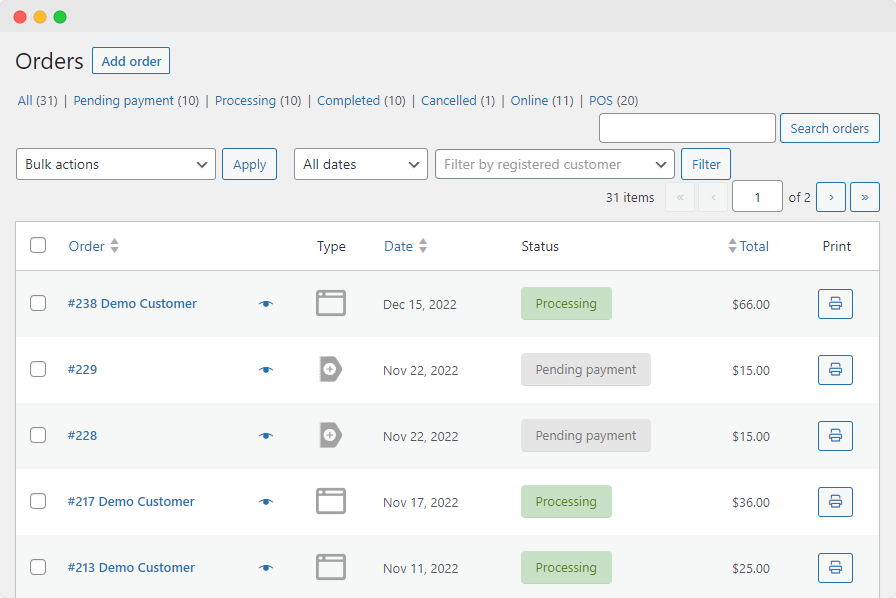
2. Find and click on the order you want to refund from the list of orders.
3. Go to the order summary and click the “Refund” button to begin the refund process.
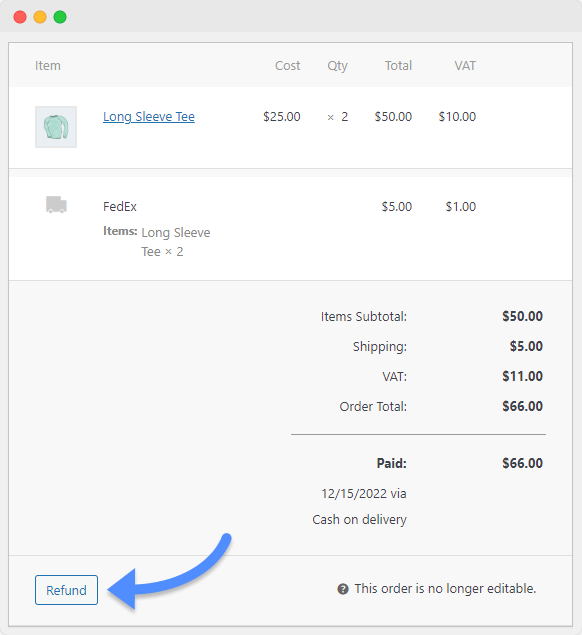
4. Enter the quantity of the product(s) you want to be refunded for each line item. The refund amount will be adjusted automatically.
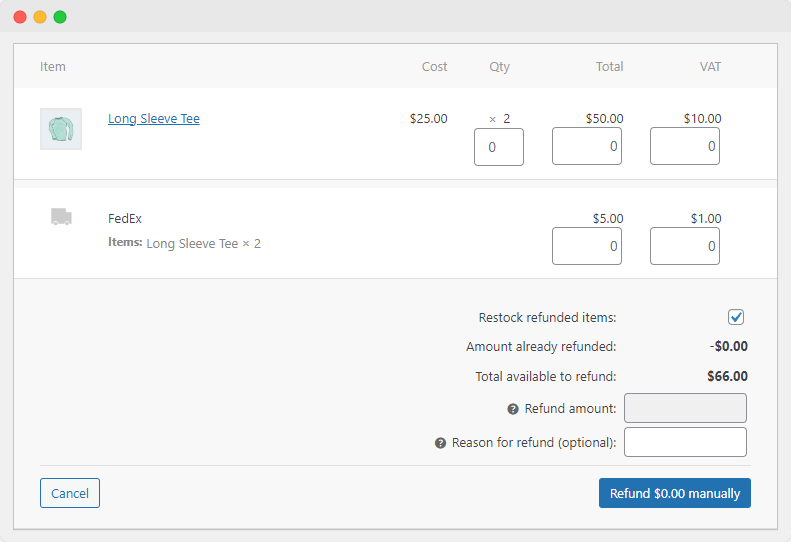
5. If your inventory isn’t managed, enter the refund amount without adjusting the product quantity.
6. If you don’t set quantities, the order won’t be marked as fully refunded, and the email notification will show a “partial refund.”
7. If needed, you can add notes regarding the refund for your reference.
8. Scroll down to the bottom of the page and click “Refund $XX.XX manually” to complete the refund process.
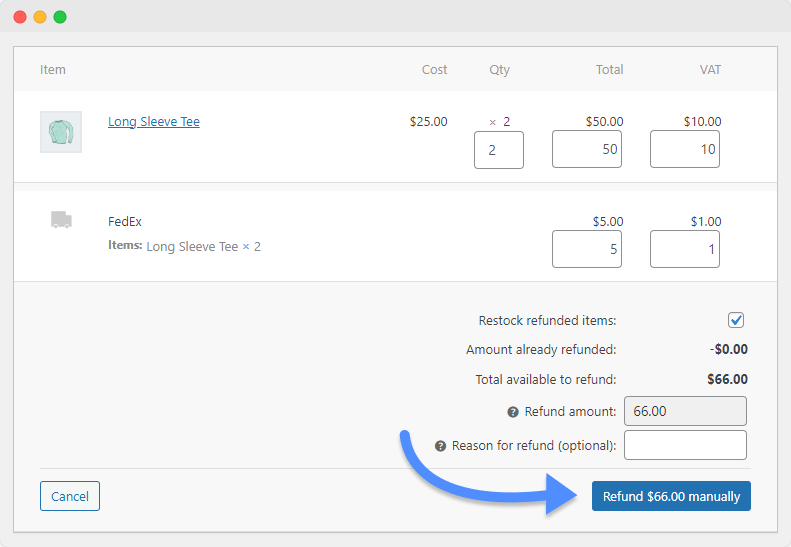
9. The refunded items will be labeled as refunded in the order summary, and you’ll see the order status updated to reflect the refund.
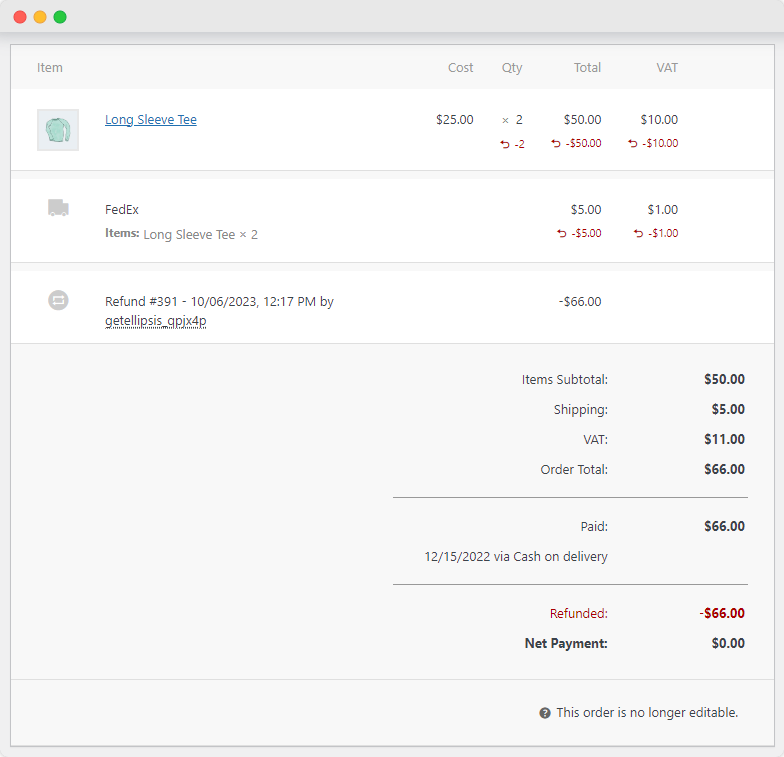
How manual refunds affect order status and inventory
- Order status: Full refunds mark the order as refunded. Partial refunds may show as partially refunded or unchanged based on item quantities.
- Inventory: WooCommerce will adjust your inventory, adding back the quantities for refunded items if inventory is managed.
Challenges of manual refund processing
Manually processing refunds is not without its challenges:
- Time-consuming: Accessing individual orders and entering refund details can be cumbersome.
- Risk of mistakes: Manual entry increases the risk of incorrect refunds or inventory issues.
- Additional steps for payment: Refunds don’t automatically go through the payment gateway; an extra step is needed.
- Payment gateway fees: These fees aren’t typically refunded, meaning that refunding purchases can be costly for the store owner.
- Tax calculations for partial refunds: These might require manual work, adding complexity.
- Inventory management: The choice to restock products adds another layer to consider.
Method #2: Automating refunds in WooCommerce
Manually processing refunds in WooCommerce offers detailed control, but challenges might make it less suitable for large-scale operations in your business. Don’t worry. There are alternatives available.
Automating refunds in WooCommerce brings a new level of simplicity, accuracy, and efficiency to your eCommerce store. Instead of manually processing each refund, automated refunds leverage your payment gateway, like PayPal, Stripe, etc., to handle the process, ensuring that all refund aspects are handled swiftly and accurately. Let’s explore this process step-by-step:
1. First, you need to integrate your payment gateway with WooCommerce. Confirm if your payment gateway supports automatic refunds by checking its documentation or support resources. In this example, we’ll use Stripe as the payment gateway.
2. Sign up for a Stripe account and navigate to the “Developers” section.

3. Under the “API keys” tab, create the API secret keys required for integration. Note the newly created “Publishable key” and “Secret key”.
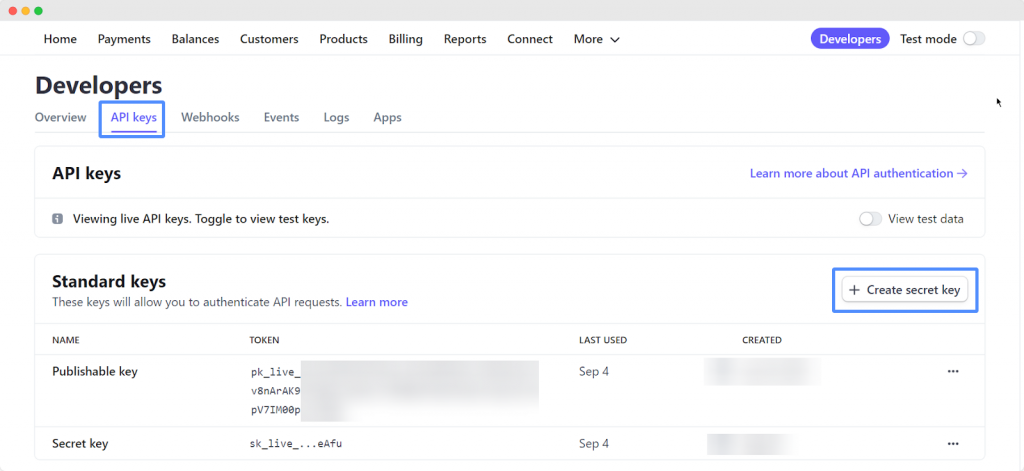
4. Go to your WordPress dashboard and install the WooCommerce Stripe Payment Gateway plugin.
5. Navigate to WooCommerce > Settings > Payments to enable Stripe payments and edit your API account keys.
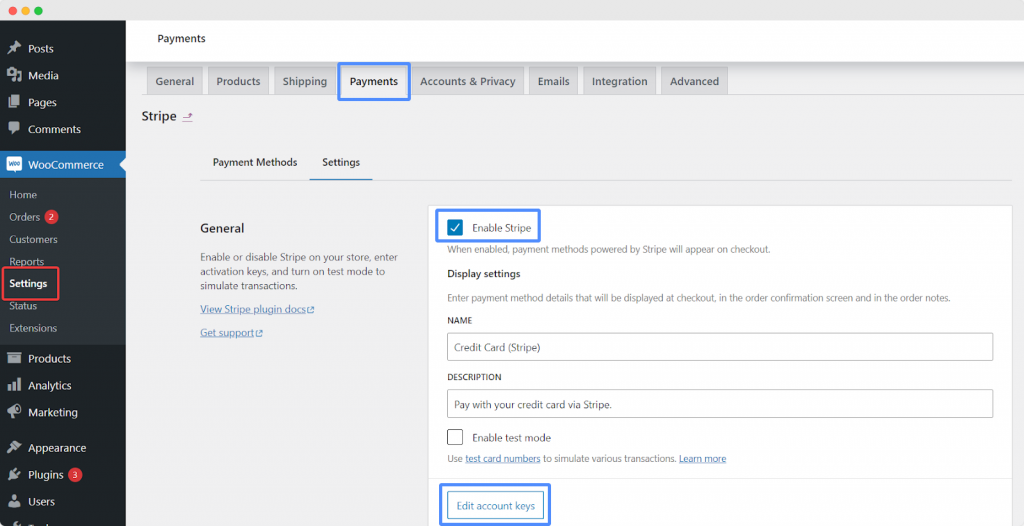
6. Copy and paste the created API keys from Stripe in the provided fields. Save them to ensure your API settings are correctly configured.

7. You can also test your payment gateway and refund process in test mode to avoid real transactions during setup.
8. Now that the Stripe payment gateway is set up, let’s configure automatic refunds. From your WooCommerce dashboard, navigate to WooCommerce > Orders, and select the order you want to refund.
9. Locate the order summary section within the order details and click the “Refund” button to initiate the refund process.
10. For each line item, specify the number of products to be refunded. The refund amount will be adjusted automatically.
11. If inventory management isn’t enabled, you can enter the refund amount without adjusting the product quantity. If you don’t set quantities, the order will indicate a “partial refund.”
12. Add any necessary refund notes for your reference, and scroll down to choose “Refund $XX.XX via [your gateway].”
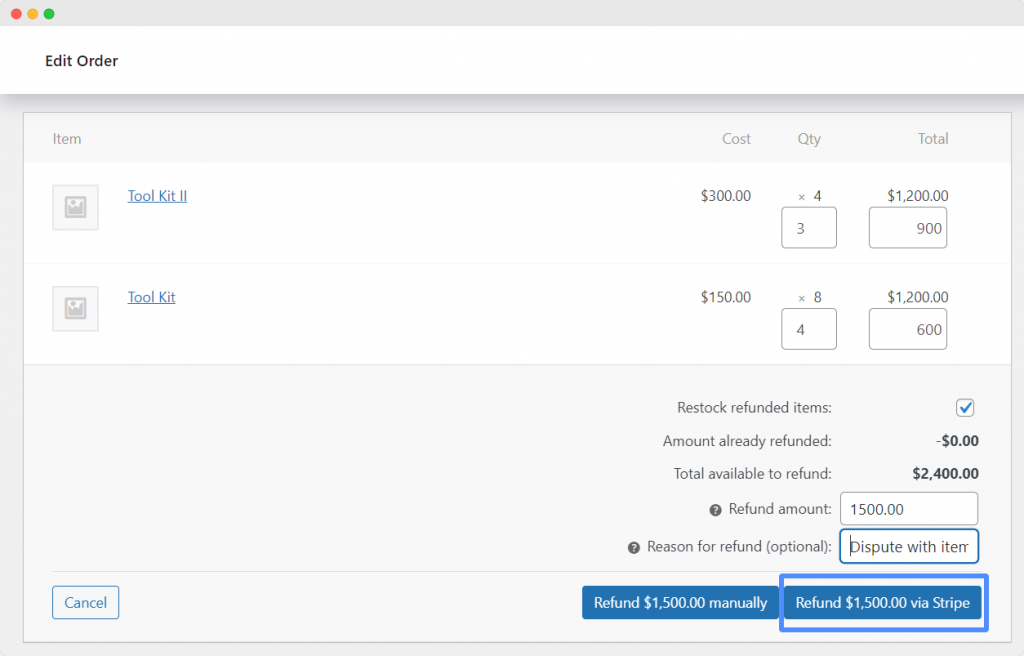
14. Check the Order Notes in the right sidebar to verify that the refund has been logged. Look for a successful “Refunded” message in order notes.
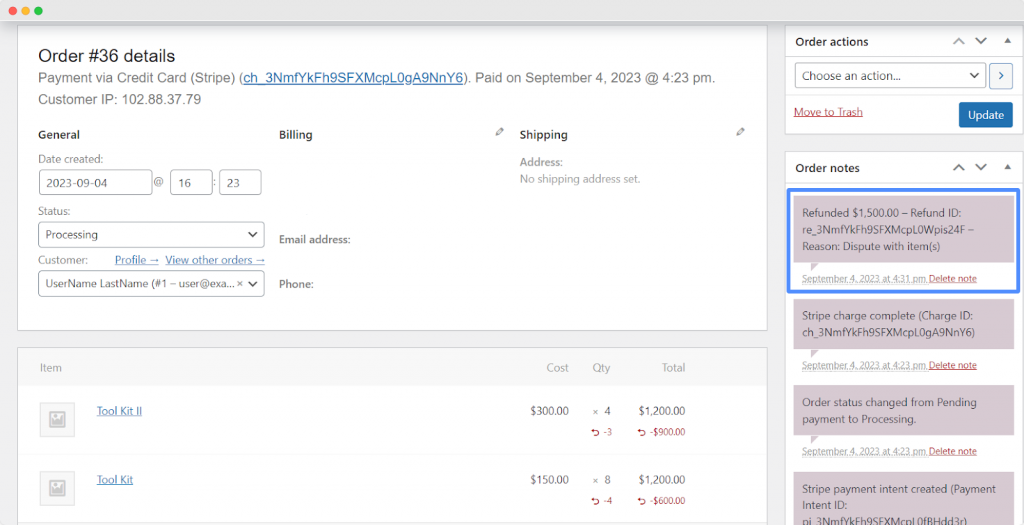
How automated refunds affect order status and inventory
- Order status: Automatic refunds update the order status automatically, reflecting the refund. Order notes provide a record of this change.
- Inventory: The inventory associated with the refunded items is adjusted to keep stock levels accurate.
Updating customers about refunds with the Flow Notify plugin
In the competitive world of eCommerce, customer satisfaction is paramount. For eCommerce store owners, keeping customers informed about their refund status is essential, and that’s where Flow Notify comes into play. Whether via SMS, email, or WhatsApp, Flow Notify ensures that customers are kept in the loop regarding their WooCommerce refund status.
Flow Notify is a powerful automatic notification plugin specifically designed for WooCommerce. Its robust features allow you to automate order notifications, send personalized messages, and even create custom order statuses. Here’s how you can use Flow Notify to send custom refund notifications:
1. Install the Flow Notify plugin on your WooCommerce website.
2. From your dashboard, go to Flow Notify > Notifications, then click “Add.”
3. On the Add page, set up the new refund notification by specifying its name, recipient (customer or store admin), subject, and notification type (email, SMS, or WhatsApp).

4. Create the notification message with a combination of plain text and WooCommerce data fields. This enables you to dynamically pull customer-specific data into your notifications. These data fields include billing name, shipping method, product sales, and coupon codes.
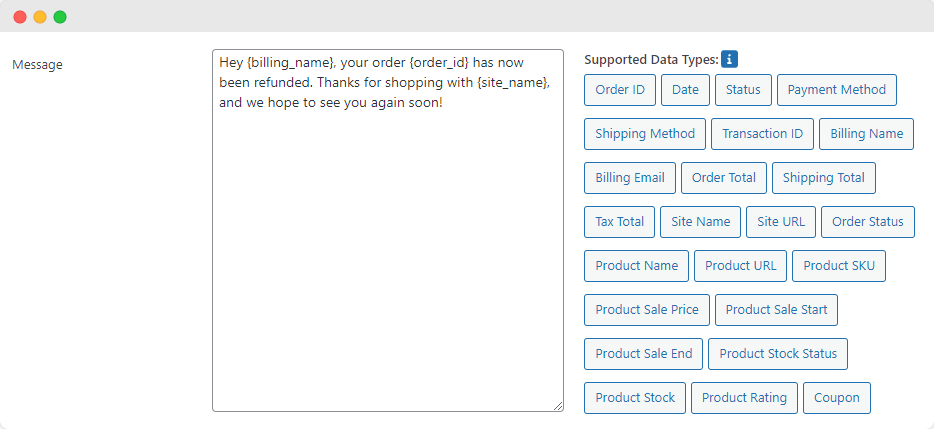
5. Determine the trigger for your notification. Common triggers include a change in order status, but you can also base notifications on events like new account creation, product review submission, or customer order total. When it comes to updating customers about refunds, you will most likely want to trigger your notification based on a change in order status. For example, you might create a notification called “Your refund has been issued,” which will be sent whenever the status of an order changes to “Refunded”.
6. Your custom refund notification will now be sent based on your set trigger.
Benefits of using Flow Notify for WooCommerce refund notifications
- Improving customer satisfaction: Immediate notifications keep your customers informed, enhancing their experience.
- Reducing workload: Automated notifications mean less manual work for business owners.
- Ensuring timely and accurate communication: Customized triggers and messages ensure the correct information is sent at the right time.
- Multi-platform support and integration: Flow Notify offers multi-platform support, allowing notifications to be sent via SMS, Email, or WhatsApp. Its seamless integration with WooCommerce makes it a convenient and powerful tool for managing WooCommerce refund notifications, aligning with your existing workflows, and providing a comprehensive solution for your business.
Utilizing Flow Notify keeps your customers in the loop and strengthens your relationship with them. Automated notifications about refunds not only streamline your operations but also elevate your brand’s reputation. If you’re looking for a way to boost customer satisfaction and enhance your operational efficiency, Flow Notify might be the perfect solution for you.
Improving the refund process with custom order statuses
In the eCommerce landscape, managing and tracking refunds can be complex. However, custom order statuses in WooCommerce offer a more granular way to handle refunds, enhancing your ability to meet customer needs promptly.
What are custom order statuses?
Custom order statuses provide specific tags for various stages in the refund process. By implementing them, you can create tailored statuses that align with your unique business workflow, giving you greater control and visibility over refunds.
Examples of the kinds of custom order statuses that you can add in WooCommerce to improve your management of refunds include:
- “Refund Pending”: Awaiting approval for the refund request.
- “Refund Processed”: The refund has been approved and is being processed.
- “Refund Completed”: The refund has been successfully issued to the customer.
Creating custom order statuses with Flow Notify
WooCommerce doesn’t natively provide the functionality to create custom order statuses. That’s why a plugin like Flow Notify is essential. Here’s a quick guide on how to use Flow Notify to create and use custom order statuses for refunds:
1. First, install the Flow Notify plugin.
2. From your WordPress dashboard, navigate to Flow Notify > Order Status, and click “Add Order Status.” Here, you can customize the status appearance – icon, color, description, and slug.
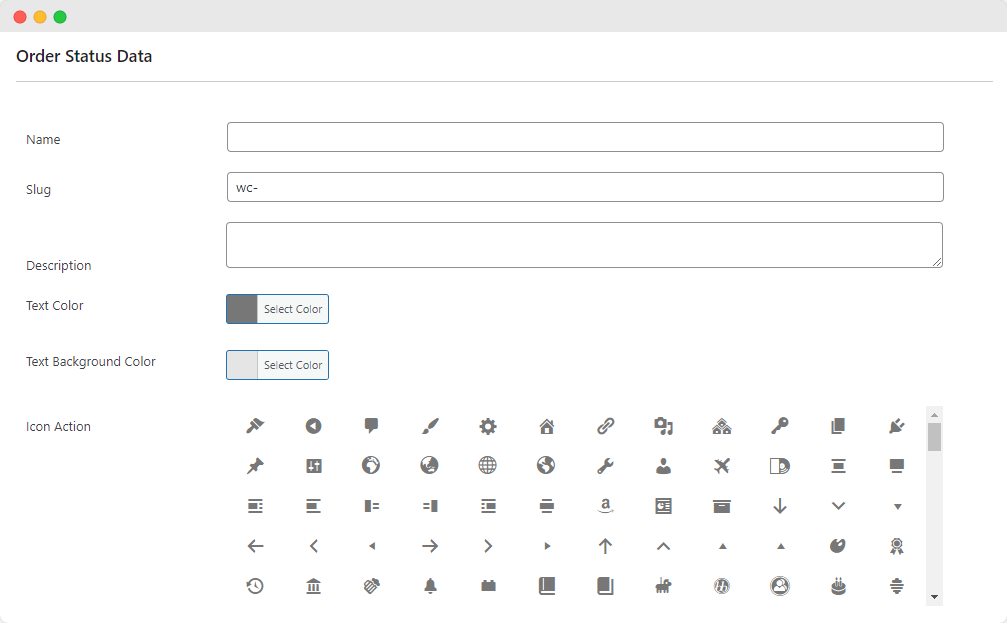
3. Set “Next Statuses” for the order’s progress and a default status if needed. Also, choose if the status appears in Bulk Actions or WooCommerce reports.

And voila! That’s all you need to do! Now, you can use your new order statuses to help better manage your order fulfillment process.

Reducing returns: how to improve the WooCommerce refund process
In a recent survey, 50% of the respondents cited a lack of convenient return options as the reason for abandoning a purchase. This startling statistic reveals that getting your returns process right is more than a convenience – it’s crucial to customer satisfaction and retention for your business.
3 practical tips to reduce returns
- Improve product descriptions and images: Clear, accurate descriptions paired with high-quality images help your customers make informed purchasing decisions, reducing the likelihood of dissatisfaction and subsequent returns.
- Offer excellent customer service: Providing real-time assistance to customers can clarify doubts and minimize the likelihood of returns.
- Set clear return and refund policies: Ensuring transparency in your return and refund policies gives your customers a clear understanding of what to expect, thereby reducing potential friction.
Improving the refund process in WooCommerce: 3 tips
- Automate refunds: Streamlining your business’s refund process is essential for efficiency. Tools like Flow Notify can be integrated into your WooCommerce dashboard to automate refunds, saving you time and providing an enhanced customer experience.
- Use custom order statuses: Tailor your process with custom statuses, including ones for the WooCommerce refund process. Flow Notify grants you the ability to create and manage these statuses seamlessly.
- Keep customers informed: Communication is paramount for growth-focused businesses like yours. Keeping customers informed about their refund status fosters trust and loyalty. Flow Notify enables this proactive communication by sending automated notifications via email, SMS, or even WhatsApp.
Improve your WooCommerce refund process with Flow Notify
For WooCommerce store owners, understanding and managing refunds is not just an administrative task but a crucial part of customer satisfaction. When managing refunds in WooCommerce, it’s essential to keep the process as simple, efficient, and accurate as possible.
Flow Notify emerges as a powerful solution for providing a better refund process for your WooCommerce customers, enabling store owners to:
- Automate customer notifications: Keep your customers informed with automated notifications about their refund status, enhancing transparency and trust.
- Manage custom order statuses: Customize the refund process with statuses like “Refund Pending” and “Refund Processed,” thus streamlining your workflow.
- Integrate seamlessly with WooCommerce: Flow Notify works within your WooCommerce dashboard, making it an integral part of your refund strategy.
Are you ready to elevate your WooCommerce refund process to new heights of efficiency and customer satisfaction?
Managing refunds in WooCommerce is a sophisticated task, but you don’t have to navigate this complex terrain alone. Flow Notify provides the automation and customization necessary to ensure customer satisfaction and streamline your business operations.
Don’t let the complexity of manual management hold you back from achieving a seamless refund process. Let Flow Notify be your reliable solution, handling the details and making the refund process smooth and stress-free for you and your customers.
Get started with Flow Notify today and transform your WooCommerce refund experience!

